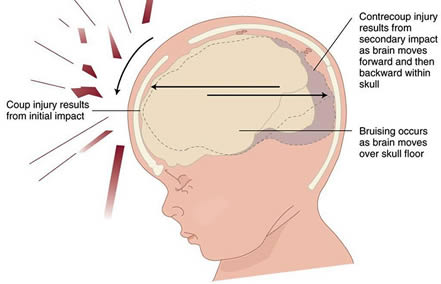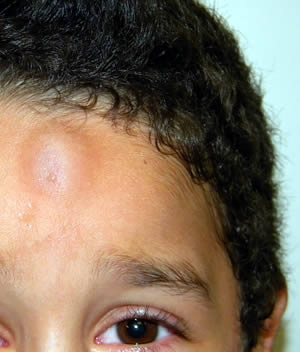Welcome to the Northern Brain Injury Association’s introduction to Childhood Brain Injury.
The information provided is intended only as general information. When in doubt about a child’s condition, always contact qualified health practitioners.
 Childhood acquired brain injury occurs much more often than we know, because so many injuries goes unreported, untreated, and unacknowledged. Many children that acquire a mild brain injury will heal and go on to have few, if any issues. But they are an exception, for many injured children may develop from mild to serious issues, some that last the rest of their lives.
Childhood acquired brain injury occurs much more often than we know, because so many injuries goes unreported, untreated, and unacknowledged. Many children that acquire a mild brain injury will heal and go on to have few, if any issues. But they are an exception, for many injured children may develop from mild to serious issues, some that last the rest of their lives.
The human brain is a wonderful, magical organ that begins forming very early in prenatal life (just three weeks after conception), but in many ways, brain development is a lifelong project. Here are a few facts about children and their brain:
- 60% of all the energy a baby expends is concentrated in the brain.
- The brain develops faster from birth to age three than at any other time in life.
- If a baby’s body grew at the same rate as the brain, the baby would weigh 77 kg (170 pounds) at one month old.
- By the age of three, children’s brains have formed 1000-trillion connections between neurons.
- At its peak, a child’s cerebral cortex creates two-million synapses every second.
- The brain ‘prunes’ (reduces) about 15% of the brain’s dendrites and synaptic connections during teenage years.
Acquired brain injury symptoms vary greatly in degree by injury, and from person to person no matter the age. They can be mild, with short term disorientation and unconsciousness; or severe, with extended loss of consciousness and/or memory loss.
- Falls are the most common cause of acquired brain injuries. The fall doesn’t need to be from a great distance to potentially cause an acquired brain injury.
- A motor vehicle crash
- Being struck by, or running into something (frequently when engaging in sports or other recreational activities)
- Fighting and physical abuse (like shaking)

Coup-Contrecoup
Injuries caused by force often cause the brain to strike one side of the skull, and then bounce back to hit the other (this effect is known as coup-contrecoup), which can cause serious nerve (neuron) damage in the brain.
But, acquired brain injury can also be caused by:
- Anoxia (when breathing and/or heartbeat cease)
- Infections of the brain, and/or its covering
- Tumors/Surgery
We use to believe that children were wonderfully resilient little beings who could “bounce back”, even after severe brain trauma. However, we now know that children’s brains are much more vulnerable than adult brains are, and because their young brains are still developing, it sometimes takes much longer for the effects of trauma to be observed. To complicate matters, children do not lose consciousness as easily as adults do, so injuries may not be thought to be severe, even though they may well be.
Because children do not use all the care and attention adults do, they tend to become injured much more often. When the get hurt, one of the most common parts of a child’s body to be injured, is the head. Pre-school age children are the second highest risk group for brain injury (teen males are 1st), and children between the ages of 6 and 12 are involved in twice as many pedestrian/motor vehicle accidents that cause brain injuries as younger children.

Preschoolers with injuries to their frontal lobes often look fine within a few weeks or months. However, as they get older and their brains mature, the part of the brain that was damaged may not work as well as it should.
The brains of children are much more physically susceptible to injury than adult brains are, and the injury may be more severe to a child for a number of reasons:
- First, a child’s head is significantly heavier than the rest of their body when compared to an adult, making children particularly susceptible to falls that cause head and neck injuries.
- Second, the skull segments in a very young child are still forming and fusing.
- Third, the skull segments of a child are much thinner than an adult’s, offering far less protection from injury.
- Fourth, a child’s brain is still in a developing state, and continuing to make important nerve connections. Any disruption could restrict or obstruct this development process, and potentially result in lifelong problems.
Often children who sustain a brain injury early in life may look “well” or “fine” at the moment, but as the child gets older, cognitive and behavioral problems may begin to emerge. In adults, the effects and degree of brain injury can generally be observed soon after the event. But for children, it can be very different, sometimes taking months or even years for results of the injury to become obvious. The primary reason why it may take longer for the effects to become noticeable in children, is because brain development continues throughout childhood and adolescence, and it is only when the brain fully develops that the true extent of a brain injury can be known. For instance, it make take into the teenage years for a youth with an acquired brain injury to discover they have difficulties with skills such as independence, and the ability to plan a life, which will only become obvious during this time.
 Another significant difference between brain development in a child versus an adult, is that the brain is far more impressionable (neuroscientists use the term ‘plastic’) in early life, than it is in maturity. This neural plasticity has both positive and negative sides:
Another significant difference between brain development in a child versus an adult, is that the brain is far more impressionable (neuroscientists use the term ‘plastic’) in early life, than it is in maturity. This neural plasticity has both positive and negative sides:
On the positive side, it means that young children’s brains are much more open to learning and embracing enriching influences.
On the negative side, it means that should their environment prove especially unsafe, impoverished or un-nurturing, young children’s brains are much more vulnerable to developing behavioral and developmental issues.
Learn to recognize brain injury symptoms and be sure to follow the appropriate steps if a child is injured. Simply asking how a child feels after injury is not reliable. Children may not understand what you are asking, or what they are experiencing. They may be unable to tell you how they are feeling, and lack the ability to describe their symptoms as well as adults. This is especially true of very young children. Those who care for children should always get an injured child to a doctor for evaluation and recommended care as soon as possible.

Take a child to the hospital emergency department immediately if they received a bump, blow, or jolt to the head or body, and:
- They have a headache that gets worse, and does not go away.
- They have weakness, numbness or decreased coordination.
- They have repeated vomiting or nausea.
- They have slurred speech.
- They look very drowsy or cannot be awakened.
- They have one pupil (the black in the middle of the eye) is larger than the other.
- They have convulsions or seizures.
- They cannot recognize people or places.
- They get more and more confused, restless, or agitated.
- They have unusual behavior.
- They will not stop crying, and cannot be consoled or comforted.
- There is obvious distress with breathing.
- They lose consciousness (a brief loss of consciousness should be taken seriously and the person should be carefully monitored).
Watch for any of the following signs immediately after a head injury, and for up to a few weeks afterward, and report to the doctor:
- Changes in mood – the child may become excessively irritable, or listless.
- Changes in eating habits – the child may suddenly lack interest in food or nursing, or cannot get full.
- Continued vomiting or nausea – the child’s injury may be more serious than thought, call the doctor.
- Changes in sleeping habits – the child cannot get to sleep, or sleeps too much.
- Changes in play and school behaviors – an increase in problem behaviors may indicate a need to acquire coping strategies.
- Changes in activity levels – the child may be overly tired, or lack any interest in usual activities.
- Changes in memory – the child appears to forget what it is told, and/or recently acquired skills – eg; toilet training.
- Cannot console the child, or help him or her to stop crying – the child’s injury may be more serious than thought, call the doctor.
- Changes with balance and/or walking – the child may require mobility aids to prevent possible falls and re-injury.
Post Concussion Care
If the acquired brain injury is mild (concussion), and there are no worrisome signs or symptoms, the child can be monitored and treated at home. Recommended post concussion care includes:
- Encourage the child to lie down or rest in a quiet, dimly lit place. Allow the child to sleep if desired (especially if it is nap time). It is not dangerous, although the parent or caregiver should still monitor the child.
- A mild headache, nausea, and dizziness are common, especially during the first few hours after the injury.
- Treat headache and pain with acetaminophen (Tylenol®). If the child’s headache is severe, or worsens, have the child re-evaluated by a healthcare provider as soon as possible.
- If the child is nauseous or has vomited, try offering small amounts of clear liquids at a time (such as soda, clear juice and gelatin) to help re-hydrate.
 Swelling (or “goose egg”) is also common after a head injury. An ice bag or cold pack can be applied to the area for 20 minutes at a time. Swelling usually improves within a few hours, but may take as much as a week or more to completely dissipate.
Swelling (or “goose egg”) is also common after a head injury. An ice bag or cold pack can be applied to the area for 20 minutes at a time. Swelling usually improves within a few hours, but may take as much as a week or more to completely dissipate.- Avoid, or severely limit all use of video games, computers and smart phones.
- Discourage any unnecessary physical activity.
- Use positive language, tone and behavior.
- Use simple words, and only focus on one concept at a time.
- Only one person should speak at a time.
- Eliminate all background noise (computer running, water feature, television, radio, etc.)
- Speak slower and allow plenty of time for them to absorb and respond.
- Listen more than talk. Ask questions. Repeat things if necessary.
- Check to make sure that there is understanding both ways.
- Validate the child’s feelings and frustrations.
- Ensure the child gets proper nutrition, and reassure and comfort as needed.
- If the injured child’s emotions begin getting out of control:
- Step in and act as survivor’s temporary ‘frontal lobe’, or calm ‘rational brain’, until they are back in control.
- Suggest a short break, distract them with something fun or relaxing, and help them to see other viewpoints.
- When calmed, make a plan to cope with future issues, and help them develop and use positive communication strategies.
Many medical and education professionals are unaware of the learning and social difficulties that can result from a brain injury. Because acquired brain injury is so often misdiagnosed, students with brain injuries are thought to be emotionally disturbed/mentally ill, or to have intellectual and developmental disabilities. As a result, they are often incorrectly medicated, and rarely receive the educational assistance and support that they desperately need.
It is extremely important to plan for the child’s education and future after experiencing a brain injury. The child will require an Individualized Education Program (IEP), which must remain flexible and adaptable as the parents, school and student learn more about abilities and how to adapt as necessary.
 We encourage families of children with a brain injury to learn all they can to help an injured child to reach their full potential. If the injury is very serious, family members and caregivers may find our booklet “The Healing Path” a good resource for what to expect after injury, with suggestions for while the child is still in hospital, and when they first return home. We also recommend that family members watch our video, “Family After Brain Injury” to prepare themselves for some of the challenges they may face after the injury.
We encourage families of children with a brain injury to learn all they can to help an injured child to reach their full potential. If the injury is very serious, family members and caregivers may find our booklet “The Healing Path” a good resource for what to expect after injury, with suggestions for while the child is still in hospital, and when they first return home. We also recommend that family members watch our video, “Family After Brain Injury” to prepare themselves for some of the challenges they may face after the injury.
The internet (used with caution) is a marvelous resource for information , as is your local brain injury association, which provides a wide variety of person to person programs and services that really help. Brain injury changes more than the life of the injured, it also affects the lives of the whole family. It can lead to isolation, depression, and lead to a sense of hopelessness, so please reach out to others, and never be afraid to ask for help.
Historically, brain injury rehabilitation is still in its infancy. Every day new advances are achieved, greater understanding is obtained, and breakthroughs are made, but there is still so much to learn. Please take the time to learn all that you can about acquired brain injury, and what you can to do to cope with how it affects your lives. And please, share your story with others as you grow, because it may well mean more to others than you’ll ever know.

